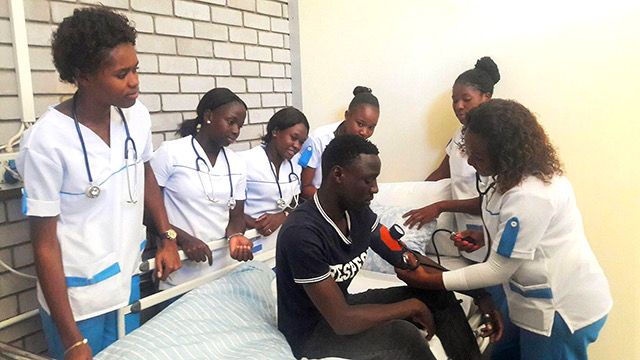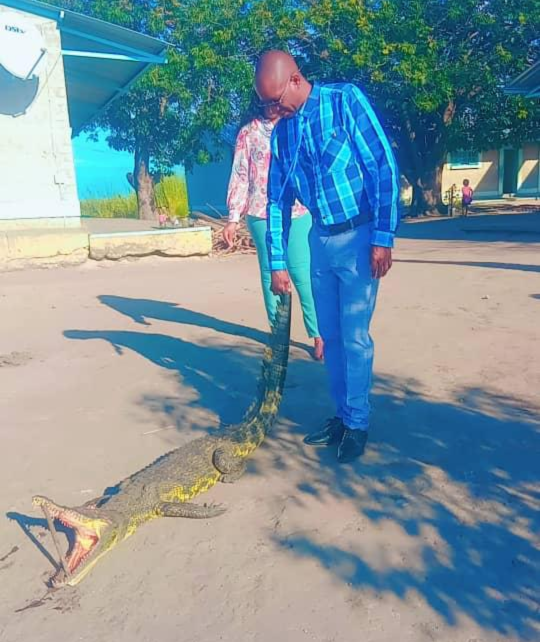Omaheke regional governor Pijoo Nganate says he is concerned after 45 children under five years died in the last six months as a result of the malnutrition crisis in the region.
In his state of the region address at Gobabis yesterday, Nganate said malnutrition cases are based on the registration for in-patient admission and most children come from informal settlements.
“Noting that this calamitous situation required a multi-sectoral and sustainable approach, the governor has established the regional malnutrition task force,” Nganate said.
He added that the task force is establishing a garden at the office premises to assist the affected communities, while inculcating a sense of responsibility and promoting community involvement and ownership.
According to Nganate, Omaheke is home to the second-largest population of the marginalised San community and the government’s attempts to provide assistance through the San development programmes have produced fruitful outcomes.
Speaking to The Namibian yesterday, Omaheke health director Jeremia Shikulo said the region recorded 132 cases of malnutrition from January to June.
He added that during the same period, 45 children under the age of five years died due to malnutrition.
“There are many factors that contribute to malnutrition, of which one is lack of food security at the community level, which is caused by social factors which I don’t really want to dwell on,” Shikulo said.
POOR LAND DELIVERY
Nganate expressed concern that last year too much land was allocated to developers, yet, people are still without land.
“I further cautioned (last year) that the model of servicing land perpetuated inequality and did not address the core issue of land delivery,” Nganate said.
He said the use of contractors to service land continues to create a large vacuum and further discriminates against the masses who cannot afford buying land.
“I stated that the region boasts young people who have the skills, knowledge and competencies to service land and that the local authorities and regional council must capacitate these young people in these local areas to service their own land, as this will drastically reduce the cost of land,” he said.
HOUSING DELIVERY
During his speech, Nganate said the regional council in conjunction with the National Housing Enterprise (NHE), through the Shack Dwellers Federation, have built 33 houses, which were completed and handed over and an additional 77 houses were requested and approved.
“NHE provided 16 houses at Nossobville and 50 at Epako. With regard to the Build Together Project, 11 houses were completed,” he said.
YOUTH UNEMPLOYMENT
The governor said the high youth unemployment rate is indicative of the high poverty levels in Omaheke.
“Although we derive our livelihood predominantly from agriculture, in Omaheke region it is evident that the regional agricultural sector cannot provide work to the majority of job seekers, as the overall unemployment rate of Omaheke is at 34%,” he said.
SAFETY AND SECURITY
Nganate said crime in the region is manageable although there are limited resources.
The crimes recorded in the region include theft, assault with intent to do grievous bodily harm, stock theft, housebreaking with intent to steal, and common assault.
“With regard to serious crimes committed, 437 cases were recorded – murder (22), housebreaking and theft (323) and robbery (92),” he said.
Furthermore, 322 cases of stock theft were reported, with 292 arrests. Of these cases, 437 head of cattle were stolen and 170 recovered, while 635 small stock were stolen and 331 recovered.
The total value of stolen livestock is N$5 833 835 and recovered livestock amounted to N$2 264 077.
“In respect of gender-based violence, assault with intent to do grievous bodily harm and common assault, read with domestic violence, remain prevalent,” Nganate said.
He added that it has been concluded that alcohol and drug abuse, jealousy and poverty (dependence of victims on suspects) are the main causes of these crimes as 58 common assaults and 50 gender-based violence cases were reported.
Stay informed with The Namibian – your source for credible journalism. Get in-depth reporting and opinions for
only N$85 a month. Invest in journalism, invest in democracy –
Subscribe Now!










